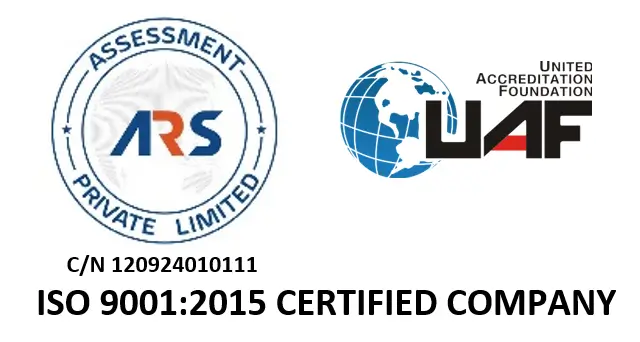Did you know that the Small Business Innovation Research (SBIR) program has awarded over $50 billion in grants to small businesses since its inception? The Small Business Innovation Research (SBIR) grant program is a government initiative that offers vital funding for research and development (R&D), enabling small businesses to innovate and grow without the burden of upfront costs.
For entrepreneurs and startups, securing funding for research and development (R&D) can be a major challenge. The Small Business Innovation Research grant program provides essential financial support, allowing businesses to focus on creating groundbreaking solutions without sacrificing ownership or equity. Beyond funding, SBIR grants open doors to collaboration with federal agencies and offer a pathway to commercial success.
In this article, we’ll explore everything you need to know about SBIR funding, from qualifications and the application process to overcoming challenges and maximizing long-term benefits. If you’re ready to take your business to the next level, this guide will show you how to leverage the Small Business Innovation Research program to achieve your goals.
What Are SBIR Grants and How Do They Benefit Small Businesses?
The Small Business Innovation Research grant program provides non-dilutive funding to small businesses for R&D projects that have high commercial potential. Non-dilutive funding means that businesses do not have to give up equity in exchange for support, allowing them to maintain ownership while pursuing ambitious innovations.
For small businesses, SBIR grants offer:
- Financial Support for High-Risk Projects: Early-stage R&D can be costly, and SBIR funding provides the resources needed to bring ideas to life.
- Credibility and Validation: Being awarded an SBIR grant signals to investors and partners that your project has potential and has been vetted by a federal agency.
- Access to Federal Expertise: Collaborating with agencies often provides insights, mentorship, and technical support that can refine your innovation.
Why Is SBIR Funding Crucial for Small Business Growth?

Small businesses often struggle to compete with larger companies due to limited resources. SBIR funding levels the playing field by enabling them to focus on groundbreaking innovations.
Here’s why this program is essential for growth:
1. Supports High-Impact Innovation
SBIR grants target projects that address critical challenges or explore uncharted territory in technology and science.
2. Encourages Risk-Taking
Many businesses shy away from risky projects due to financial constraints. SBIR funding empowers them to take calculated risks that can lead to transformative breakthroughs.
3. Opens Doors to Partnerships
By working with federal agencies, small businesses can form valuable connections with stakeholders in their industry.
4. Facilitates Commercialization
SBIR provides resources not only for R&D but also for bringing products to market, ensuring innovations don’t just stay in the lab.
What Types of Innovations Does SBIR Fund?
The Small Business Innovation Research program is designed to support a wide range of industries and cutting-edge technologies.
Some areas commonly funded include:
Health and Biotechnology
Small businesses in this field often receive funding to develop groundbreaking treatments for chronic diseases, rare conditions, and emerging health crises. The program also supports the creation of advanced medical devices such as wearable health monitors, diagnostic tools, and surgical instruments that enhance the precision and effectiveness of care.
Clean Energy
The SBIR program also funds projects focused on advancing renewable energy sources, such as solar, wind, hydroelectric, and geothermal technologies, that reduce reliance on fossil fuels. Businesses developing efficient energy storage systems, including advanced batteries and grid-scale solutions, also benefit from SBIR funding, ensuring renewable energy is available even during periods of low production.
Aerospace and Defense
Small businesses working on space exploration technologies, such as spacecraft propulsion systems and mission-critical components for NASA, are key beneficiaries of the program.
Information Technology
The program supports projects that develop artificial intelligence (AI) applications, including machine learning algorithms and natural language processing tools that transform industries such as healthcare, finance, and logistics. Cybersecurity innovations, such as advanced threat detection systems, secure cloud platforms, and encryption tools, are also heavily funded to address the growing complexity of digital threats.
Advanced Manufacturing
The program also supports the development of new materials that are lightweight, durable, and sustainable, which are essential for industries like aerospace, automotive, and construction. Small businesses working on modernizing production processes, such as 3D printing and additive manufacturing, benefit from SBIR grants as well, enabling them to deliver precision and scalability in manufacturing.
How Do Small Businesses Qualify for SBIR Grants?

The Small Business Innovation Research (SBIR) program is specifically designed to support innovative small businesses with the potential to make significant contributions to their industries and the economy. However, not all businesses are eligible to receive this funding.
To qualify for an SBIR small business grant, your company must meet the following criteria:
For-Profit Status
The SBIR program exclusively supports for-profit businesses. Nonprofit organizations, while they play a vital role in various sectors, are not eligible for SBIR grants. This criterion ensures that the funding directly contributes to businesses that have the potential to commercialize their innovations and generate economic value.
Size
Your business must be classified as “small” under federal guidelines, meaning it must have 500 or fewer employees, including affiliates. This rule ensures that the program remains focused on supporting startups and small enterprises that often lack the resources to fund research and development on their own. The size requirement includes all employees across parent or subsidiary companies.
Location
The business’s operations must primarily take place in the United States. This requirement reflects the SBIR program’s mission to stimulate innovation that benefits the U.S. economy and strengthens domestic industries. Furthermore, only businesses that contribute to local economic development and innovation ecosystems are eligible for funding.
Ownership
To qualify, at least 51% of the business must be owned by U.S. citizens or permanent residents. This rule ensures that SBIR grants benefit American entrepreneurs and contribute to domestic technological advancements, reinforcing the program’s goal of fostering innovation that serves national interests.
R&D Focus
The SBIR program prioritizes projects that involve significant research and development (R&D). Qualifying projects must demonstrate technical feasibility and innovation while showing clear potential for commercialization. This focus on R&D distinguishes SBIR grants from other forms of funding, as they are intended to support groundbreaking ideas and high-risk, high-reward ventures.
Meeting these eligibility requirements is just the first step in the journey to securing an SBIR small business grant. Once the basic qualifications are satisfied, businesses must present a detailed and compelling proposal that aligns with the specific goals and priorities of the federal agency offering the grant.
What Is the SBIR Application Process?
Applying for an SBIR grant involves detailed planning and preparation.
The process typically includes:
1. Identifying Opportunities
Federal agencies regularly issue solicitations for SBIR projects. Review these to find those that align with your expertise and innovation.
2. Crafting a Proposal
Proposals should clearly outline the technical objectives, market potential, and societal impact of your project.
3. Submission
Follow the agency’s specific guidelines for submitting your application. Missing a detail can result in disqualification.
4. Evaluation
Proposals are reviewed based on technical merit, commercialization potential, and alignment with agency goals.
Though competitive, seeking advice from experienced SBIR advisors can significantly improve your chances of success.
What Are the Different Phases of the SBIR Program?
The Small Business Innovation Research program operates in three phases.
They are:
1. Phase I: Feasibility Study
Funding up to $275,000 is provided for a 6–12 month period to assess the project’s technical and commercial viability.
2. Phase II: Research and Development
Based on Phase I results, this phase provides up to $1.8 million over two years for full-scale R&D efforts.
3. Phase III: Commercialization
No SBIR funding is awarded, but businesses are encouraged to seek private investment or federal contracts to bring their product to market.
Each phase builds on the last, ensuring that projects progress systematically toward commercialization.
How Much Funding Can Small Businesses Expect from SBIR Grants?
Funding varies by phase and agency, but businesses can typically expect:
- Phase I: Up to $275,000 for feasibility studies.
- Phase II: Up to $1.8 million for R&D.
- Phase III: No direct funding, but significant opportunities for growth through commercialization.
What Are Common Challenges in Applying for SBIR Grants?
While the Small Business Innovation Research (SBIR) program provides significant opportunities for small businesses, the application process is known to be rigorous and highly competitive. Many applicants encounter challenges that require careful planning and effort to overcome.
Here’s a closer look at the most common obstacles:
Intense Competition
SBIR grants are highly sought after, and only the most innovative and commercially viable projects receive funding. Each year, federal agencies receive thousands of applications, but only a fraction are approved. To stand out, businesses must present a proposal that demonstrates exceptional innovation, aligns with agency priorities, and offers strong potential for commercialization.
Time-Consuming Process
Preparing an SBIR proposal is a time-intensive endeavor that requires significant attention to detail. From conducting market research and drafting technical objectives to aligning with agency-specific guidelines, the process demands considerable effort and resources. Small businesses, often operating with limited staff and tight schedules, may find it challenging to allocate the necessary time to craft a strong application.
Technical Jargon
SBIR proposals must address complex technical details, requiring applicants to articulate their innovation in a way that is both precise and compelling. Agencies expect high levels of specificity regarding the feasibility, methodology, and anticipated outcomes of the project. For first-time applicants or those without a technical writing background, the need to use industry-specific jargon can be overwhelming. Miscommunication or lack of clarity in the proposal may result in rejection.
Understanding Agency Priorities
Each federal agency involved in the SBIR program has its own set of goals and research priorities, which applicants must thoroughly understand to align their proposals effectively. Misalignment with these priorities, such as proposing a project that does not directly address an agency’s focus areas, often leads to rejection.
How Can Small Businesses Leverage SBIR Grants for Market Success?
Small businesses can turn SBIR grants into a springboard for market success by using the funding to fuel innovation and create a clear path to commercialization. These grants provide the opportunity to refine groundbreaking ideas, validate products in real-world conditions, and address technical hurdles that might otherwise delay progress.
Small businesses can:
- Develop a Clear Commercialization Plan: Focus on transitioning your innovation from R&D to market.
- Use Funding Strategically: Allocate resources to critical areas like prototyping, testing, and marketing.
- Build Partnerships: Collaborate with industry leaders and federal agencies to strengthen your project.
- Attract Investors: Use the credibility of the grant to secure additional funding.
How Can SBIR Grants Help Small Businesses Collaborate with Federal Agencies?
One unique aspect of SBIR small business grants is the opportunity to work closely with federal agencies.
This collaboration can:
- Provide access to specialized facilities and resources.
- Offer valuable mentorship and technical expertise.
- Lead to potential future contracts and partnerships.
Such collaborations not only validate the business’s innovation but also open doors to new opportunities.
What Are the Long-Term Impact and Benefits of Receiving SBIR Grants?

The benefits of SBIR funding extend far beyond the initial grant period.
These include:
Increased Credibility
Receiving an SBIR grant is a significant endorsement of your business and its innovation. Federal agencies rigorously evaluate proposals, and securing funding demonstrates that your project is technically sound, commercially viable, and aligned with national priorities. This recognition enhances your reputation among investors, customers, and industry stakeholders, making it easier to attract additional funding, forge partnerships, and build trust in your brand.
Accelerated Growth
SBIR grants provide the financial boost and collaborative opportunities needed to fast-track development. Businesses can use the funding to refine prototypes, conduct feasibility studies, or scale production. The mentorship and technical resources often available through federal agencies also help overcome hurdles more efficiently.
Stronger Market Position
Innovations that receive SBIR funding often address pressing challenges or explore untapped markets, which positions businesses as leaders in their respective industries. This leadership can lead to long-term advantages, such as customer loyalty, increased visibility, and a stronger ability to compete with larger companies.
Sustainable Revenue
One of the most tangible long-term benefits of SBIR grants is the ability to generate sustainable revenue streams. The financial independence gained from successful commercialization enables businesses to reinvest in new projects, ensuring continued innovation and relevance in their industries.
Is SBIR Right for Your Small Business?
If your business is focused on innovation and aligns with federal R&D priorities, the Small Business Innovation Research grant program could be your next big opportunity. For expert support, LSI offers comprehensive economic development services to guide you through the process.
Grow Your Business with LSI’s Expertise
Securing an SBIR grant can transform your small business, but the process requires careful planning and execution. LSI specializes in helping businesses like yours succeed with expert guidance and tailored strategies. From identifying opportunities to crafting winning proposals, LSI’s economic development services ensure you’re prepared for every step.
Ready to take your business to the next level? Contact LSI today through their website and discover how the Small Business Innovation Research program can fuel your innovation and growth.






